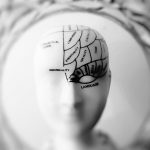The COVID-19 pandemic has changed our world forever, impacting all aspects of social, economic, political, and community life. No sector has been hit as hard as the education sector, with teachers and administration struggling to reorganise and teach affectively both online and in socially distant classrooms.
COVID-19 has turned education on its head. Parents are struggling as their little ones try to learn on complicated Zoom chats, teens are panicking as they study for their GSCEs and A-levels, and university students are trapped in dorm accommodation as campuses are locked down.
While it’s easy to list the negative ways that COVID-19 has impacted education, there have been some positives as well. Teachers and students alike have been forced to get creative, and some parents have embraced the chance to spend more time with their children and get involved in their lessons.
How has coronavirus impacted education?
The most significant impact of the COVID-19 pandemic on education in the UK has been the move towards e-learning, in which the teaching occurs remotely, and student access lessons on digital platforms.
- A mix of in-person and e-learning – Some schools have pioneered a mix of e-learning and in-person education, particularly in Scotland. The “blended model” combines in-class learning with online lessons. During the lockdown and over the summer, class sizes were reduced, the learning day was staggered, and certain courses were taught solely online.[i]
- Social distancing – Of course, social distancing is now mandated in every UK classroom, although some teachers and parents report that the enforcement is too lax. Up to 90% of teachers “say that social distancing in schools is impossible.”[ii] Even if it is the rule, many schools are struggling to maintain this standard, especially with young children.
- A widening education gap between rich and poor students – Sadly, the pandemic is widening the gap between the haves and have nots, particularly when it comes to education. More than 1.3 million English children are considered ‘disadvantaged,’ and many were trapped in small flats with little to no access to the outdoors during the lockdown.[iii]Many of these children depend on free school meals, which were harder or impossible to access. Even if they have an internet connection at home, many do not have laptops or desktop computers. As a result, they try to complete schoolwork on mobile phones, and quickly fall further and further behind.
Data shows that 43% of the students in the most disadvantaged state schools are completing less than an hour of schoolwork each day. That is compared with just 14% of students from more advantaged state schools whose teachers said the same.
The long-term effects of education disruption
The long-term effects of the disruption in education due to COVID-19 are worrying. Past studies that look at the after-effects of natural disasters show that they have lasting consequences on children’s learning. As a result, many go on to max out at lower levels of education, which hinders them in the rest of their lives. “Lower educational attainment is associated with lower earnings, higher crime rates, poorer health and mortality outcomes, and reduced participation in political and social institutions.”[iv]
No matter what happens, it’s clear that more needs to be done to ensure that disadvantaged students are supported and given extra resources so that they can catch up and stop falling behind. If we don’t do more to close this education gap, all pretences of a ‘meritocracy’ will be fully crushed. Without fair access to education, the poor will get poorer.
How students and teachers have adapted
After the trials and tribulations of COVID-19, never let it be said that students and teachers are not resilient and adaptable![v] More than 1.2 billion children around the world are or were out of the classroom at the height of the pandemic. The future is up in the air in the case of another lockdown.
Education has changed radically during the pandemic, and e-learning is more crucial than ever. While many parents and teachers bemoan the inefficient nature of online lessons, there may be more to the issue. Studies show that online learning can improve information retention and take far less time than traditional classroom learning, which the popularity of online courses demonstrates.[vi]
It seems that the rushed nature of the COVID-19 response could be to blame. After all, teachers have been given unclear guidance, ever-shifting rules to adhere to, and conflicting information the whole way through the pandemic. According to SecEd, “Misinformation about COVID-19, often peddled on social media, is causing “confusion and parental anxiety” and hampering schools’ efforts to fully reopen this term.”[vii]
But even in light of this confusion, many students, parents and teachers alike are starting to get into a groove. They’re relishing some of the positives that our new e-learning world can offer.
Teachers report that the most noticeable benefit of online learning is that they can take the time to individualise the experience for different studies. They no longer have to pause the lesson to deal with certain students’ distracting behaviours (although, the onus for that has been shifted to the parents). As a result, students can progress at their own pace, without the pressures of the classroom.
Online learning also allows teachers to easily lay out assignments, set deadlines, and break information down into manageable ‘chunks’ that students have an easier time digesting. It’s easy to link to additional information, YouTube videos, and relevant articles to assist in the learning process.[viii]
Google Documents allow teachers and students to access the same document at the same time, giving teachers the opportunity to provide real-time feedback. This saves them time and effort – they don’t need to spend extra hours of their personal time to mark assignments or send comments.
While the current system is far from ideal, the resiliency and creativity of teachers, parents and students are awe-inspiring, with more innovation sure to come.
The current COVID-19 regulations for schools
The COVID-19 regulations for schools in England are continually shifting, so make sure you check with your local school for the most up to date information.
As of September 2020, all schools welcomed students back with no rotas or staggered learning.[ix] Schools are responsible for following all health and safety laws, which include conducting risk assessments and putting control methods into place.
All schools must enforce the following:
- Requiring that anyone who is ill stays at home
- Encouraging masks
- Maintaining social distancing whenever possible
- Providing hand sanitiser and promoting hand hygiene
- Regular engagement with NHS Test and Trace
- Arranging all classrooms with forward-facing desks
- Maintaining distance between teachers and pupils
- Avoiding contact between different class groups
A Massive Experiment on Learning
No matter what, the COVID-19 pandemic will go down in history as a massive experiment on the very nature of modern learning. Laura McInerney, an education journalist, wonders, “the big philosophical question is: to what extent are schools there to facilitate the economic productivity of adults, versus the learning of children? That is, what if the learning loss isn’t as bad as we expect, and the children actually benefit from some elements of lockdown, for example from closer one-on-one attention, and time with their parents?” Only time will tell.
Will e-learning remain a vital part of education even after the pandemic is under control? Now that schools and parents alike have invested heavily into online learning platforms and modified lessons and methods to suit this paradigm, it may be here to stay.
Reference list
Franklin-Wallis, O. (2020). This is how the school shutdown will affect children for many years. [online] Wired UK. Available at: https://www.wired.co.uk/article/coronavirus-children-schools-impact [Accessed 13 Oct. 2020].
Henshaw, P. (2020). COVID-19: Online misinformation and unclear national guidance hampering schools. [online] The Sec. Available at: https://www.sec-ed.co.uk/news/COVID-19-online-misinformation-and-unclear-national-guidance-hampering-schools-ofsted-re-opening-coronavirus-1/ [Accessed 18 Oct. 2020].
Li, C. (2020). COVID-19 has changed education forever — here’s how. [online] Apolitical. Available at: https://apolitical.co/en/solution_article/COVID-19-has-changed-education-forever-heres-how [Accessed 5 May 2020].
Lyst, C. (2020). Coronavirus: What is a blended model of learning? BBC News. [online] 22 May. Available at: https://www.bbc.co.uk/news/uk-scotland-52412171 [Accessed 17 Oct. 2020].
Mills, J. (2020). Almost 90% of teachers say social distancing impossible when schools reopen. [online] Metro. Available at: https://metro.co.uk/2020/08/31/almost-90-teachers-say-social-distancing-impossible-when-schools-reopen-13201745/ [Accessed 17 Oct. 2020].
NHS (2020). Guidance for full opening: schools. [online] GOV.UK. Available at: https://www.gov.uk/government/publications/actions-for-schools-during-the-coronavirus-outbreak/guidance-for-full-opening-schools [Accessed 13 Oct. 2020].
Organisation for Economic Co-operation and Development (2020). Strengthening online learning when schools are closed: The role of families and teachers in supporting students during the COVID-19 crisis. [online] OECD. Available at: http://www.oecd.org/coronavirus/policy-responses/strengthening-online-learning-when-schools-are-closed-the-role-of-families-and-teachers-in-supporting-students-during-the-COVID-19-crisis-c4ecba6c/ [Accessed 18 Oct. 2020].
Pinto, S. and Bailey Jones, J. (2020). The Long-Term Effects of Educational Disruptions. [online] www.richmondfed.org. Available at: https://www.richmondfed.org/publications/research/coronavirus/economic_impact_COVID-19_05-22-20 [Accessed 18 Oct. 2020].
Wilson, M. (2020). The coronavirus will widen the education gap in the UK. [online] www.aljazeera.com. Available at: https://www.aljazeera.com/opinions/2020/4/12/the-coronavirus-will-widen-the-education-gap-in-the-uk/ [Accessed 13 Oct. 2020].
US Department of Education (2010). Evidence-Based Practices in Online Learning: A Meta-Analysis and Review of Online Learning Studies — October 2010 (PDF). [online] Available at: https://www2.ed.gov/rschstat/eval/tech/evidence-based-practices/finalreport.pdf [Accessed 18 Oct. 2020].
Sources
[i] https://www.bbc.co.uk/news/uk-scotland-52412171
[ii] https://metro.co.uk/2020/08/31/almost-90-teachers-say-social-distancing-impossible-when-schools-reopen-13201745/
[iii] https://www.aljazeera.com/opinions/2020/4/12/the-coronavirus-will-widen-the-education-gap-in-the-uk/
[iv] https://www.richmondfed.org/publications/research/coronavirus/economic_impact_covid-19_05-22-20
[v] https://apolitical.co/en/solution_article/covid-19-has-changed-education-forever-heres-how
[vi] https://www2.ed.gov/rschstat/eval/tech/evidence-based-practices/finalreport.pdf
[vii] https://www.sec-ed.co.uk/news/covid-19-online-misinformation-and-unclear-national-guidance-hampering-schools-ofsted-re-opening-coronavirus-1/
[viii] http://www.oecd.org/coronavirus/policy-responses/strengthening-online-learning-when-schools-are-closed-the-role-of-families-and-teachers-in-supporting-students-during-the-covid-19-crisis-c4ecba6c/
[ix] https://www.gov.uk/government/publications/actions-for-schools-during-the-coronavirus-outbreak/guidance-for-full-opening-schools








